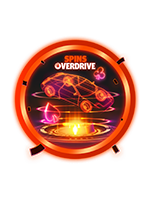How to play
Learn how to play poker tournaments
When you’re new to poker, a cash game is probably where you’ll start. You sit down to play and when you’ve won (or lost) enough, you just get up and go. A poker tournament on the other hand, can seem a bit daunting.
The reality is tournaments are just a different form of poker. Once you’ve won a few prizes and realised you can handle the competition, you might decide it’s your favourite way to play.
Whether it’s the World Poker Tour or a big online event, there are some essential tournament tactics you need to know. In this section, we take you through the basics, including rebuys and making your stack size work for you.
Shuffle up and deal, folks. It’s time for your first tournament - you can check out our poker tournaments schedule to find a few games or you can read on just to brush up on tournament basics!
Poker tournament basics
In this section, we walk you through your first tournament, including:
How tournaments work
Before the tournament starts, all players pay an entry fee and buy-in. This gets you a number of chips and your seat at the table. From then on, it’s a simple knockout situation where you keep playing until your chips run out. The winner is the player who ends up holding all the chips.
To add to the atmosphere, the blinds usually get bigger by set amounts at specific times as the game goes on. In later rounds, there’s often an ante (a fixed bet everyone pays before the first deal) as well.
How do rebuys work in poker tournaments?
Most tournaments you see online and on TV are freezeouts (basically, when you’re out of chips, you’re out). But in some competitions, you’re allowed to top up your chips – or rebuy. If the game’s a double buy-in, you can also buy yourself back in the game if you run out of chips completely.
Depending on the exact rules, you can either rebuy as many times as you want, or just at certain stages (or only if your chips fall below a certain level). Some games also have an 'add-on' period, where everyone gets a chance to buy more chips. Once the rebuys and add-ons are over, it’s a freezeout situation for the rest of the tournament.
To make the most of this type of game, you need three things: a few re-buys in your pocket; a good gambling attitude; and a keen eye for what other people are doing – both during the rebuys, and afterwards.
If you go into a rebuy tournament, you need to be prepared to rebuy. After all, everyone else will be doing it, and if you’re short-stacked you’ll have a hard time. You should also check how many chips you’re getting for your money, as sometimes add-ons are better value. For example, if you get twice as many chips for your money in an add-on, you might want to skip the rebuys, play ‘tight’ (carefully) to make your chips last, and wait.
Playing strategy
In a freezeout tournament, people usually play tight (folding all but the best hands), at least in the early stages. In a small rebuy, you’ll see players go all-in right from the start with small pairs or one high card. This is your opportunity to get some chips.Your job is to try and blend in, without actually putting in a lot of bets. A few raises, bluffs or the occasional all-in should do the trick. As the rebuys come in, the sizes of bets will get bigger. Then, when you do get a big hand, your opponents will take the gamble – and you’ll get the pot.
Staying in control
The hardest thing about this strategy is that by pretending to be a maniac (someone who plays all over the place), you can easily become one for real. Just make sure you don’t get carried away.For example, if you’ve got lucky with some crazy hands and doubled your stack, it’s time to calm down and step back for a while. The other players won’t notice your change of pace right away, and it’s not worth losing your advantage if the next hand goes wrong.
And if things haven’t gone well, don’t think you always have to rebuy. If it’s early in the game and you’re at a good table, maybe it’s worthwhile. But if you're at a mediocre or tough table, you might decide to tighten up and wait for the freezeout stage.
After the freezeout
Once the rebuys and add-ons are over, you’re in freezeout (no more chips for you – or anyone). To make the most of the game at this stage, you need to watch your opponents and see how and if their strategy has changed.For instance:
Have they noticed that they need to play differently?
Have they taken any add-ons or extra rebuys? How many?
How many chips do they have now compared with the blinds and average stacks (both at your table and overall)?
If you can get a feel for these sorts of points (especially compared to other events you've played), you'll be well on the way to the final table.
Prizes and deals
In any tournament, you’ll always know the prize pool in advance – which will help you work out if the money you’re putting in is worth it. Bear in mind that runners-up often get something too.
There can be quite a gap between first prize and fifth prize though. In which case, the final table will sometimes cut a deal to split the money. Result.
Where to start
Ready for your first tournament? We say try a few low-cost Sit & Go tounaments before chasing the big prizes. Our page on Sit & Go tactics is a great place to start.
Tournament tactics
Here we’ll give you a little more insight into tournament play, including:
Choosing your approach
Before you start playing tournaments, it’s worth taking a moment to work out your tactics. Yes, you need to win hands and chips, but some situations aren’t as clear cut as they look.
Take this classic poker dilemma:
It's the first hand of a live tournament and you're the big blind. Everybody folds except the small blind, who goes all-in. You accidentally see he has a suited ace and king. You’ve got two queens. What should you do?
- Call You have the best hand and need to build up chips
- Fold There’ll be other hands and it’s not worth the risk
In many ways, there’s no right answer to this question. It really depends on where you’re coming from as a player.
Approach one – play to survive
According to a lot of experts, your objective in a tournament is simple: don’t go broke. This means avoiding close gambles for large portions of your chips whenever you can.
Say (as with the above example), you're a 57% favourite over your opponent. In a cash game, that’s definitely worth a call. But in a tournament, 43% of the time you’d be out. Based on the estimated value (the average outcome if you did this over and over), you’re never going to win.
Tournament type
There’s also the type of tournament. If the first prize is much bigger than the second, then you should gamble to give yourself the best chance. Likewise, in short-stacked game where the blinds keep going up, the clock is against you, so it makes sense to press ahead while you can.
In a typical single-table online tournament, though, it’s not about individual wins as much as defending and growing your stack. In which case you don’t want to risk getting knocked out at any time for a relatively small profit.
A question of skill
Most poker theory tends to assume that you’re a pretty experienced player. If that’s the case, you’ll have plenty of chances to outsmart your opponents later on, so why take the risk?
If you’re a new player, you’re relying on odds, not advanced strategy, to see you through. In which case 57% is not a bad bet to take.
What would you do in these tournament situations?
To get you in the tournament frame of mind, here are some more scenarios to think about.
1. Call that bluff?
Q. It's the bubble stage (the part just before prizes) of a multi-table tournament and everyone’s folded up to you in the small blind. You have terrible cards, but put in a big bet to steal the blinds. Then the big blind goes all-in, a fraction ahead of your bet. What should you do?
A. Easy. Gamble. It might not pay off, but it’s not costing you that much extra to call, considering this is your chance for a prize position.
2. The big all-in
Q. It's the middle stage of a tournament, pre-flop, and you are one of two chip leaders at the table (he’s a bit ahead of you – the other players don’t even come close). He moves all-in, but you have two aces. Do you call or fold?
A. Again, this is obvious. You fold, even though you’ve got the best hand. This player is the only one who can send you home, so if you call, you're going to be out the tournament about 38% of the time. Better to pick off the less risky opponents first and go after the big money later.
3. Chip up at the final
Q. You’re down to the tournament final with just one opponent, whose stack size is about a quarter of yours. She moves all-in. You’ve only got a 2-2. Should you call?
A. Definitely. First, your opponent is getting desperate so might just have overcards (two high cards), not a pair. Even if she does, with your chip lead, you can take the hit. Also, you know you’re up against a good player, so you need to use any chance you can to beat them.
Multi-table tournaments
For many poker players, multi-table tournaments are where the real fun is.
For a set fee and buy-in you get a fixed number of chips, so your bankroll doesn’t have to be huge to take part. But with lots of players competing, the prize pool can be impressive, giving more people the chance to win.
As the name suggests, you’ll start on one of many tables, moving round as spaces open up, until you find yourself on the final table. Then it’s up to you – do you play to the finish or cut a deal for a guaranteed win? Either way, prizes range from cash to chances to play big live games in Europe or Vegas.
Reasons to play multi-table tournaments include:
Control your spending with fixed buy-ins that can start at absolutely nothing
Lots of players mean lots of prizes
A chance to qualify for big money tourneys for a fraction of the cost
Win trips to Europe or even Vegas to play big live tourneys

